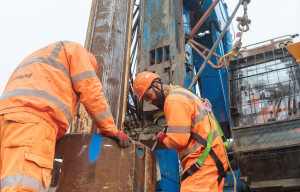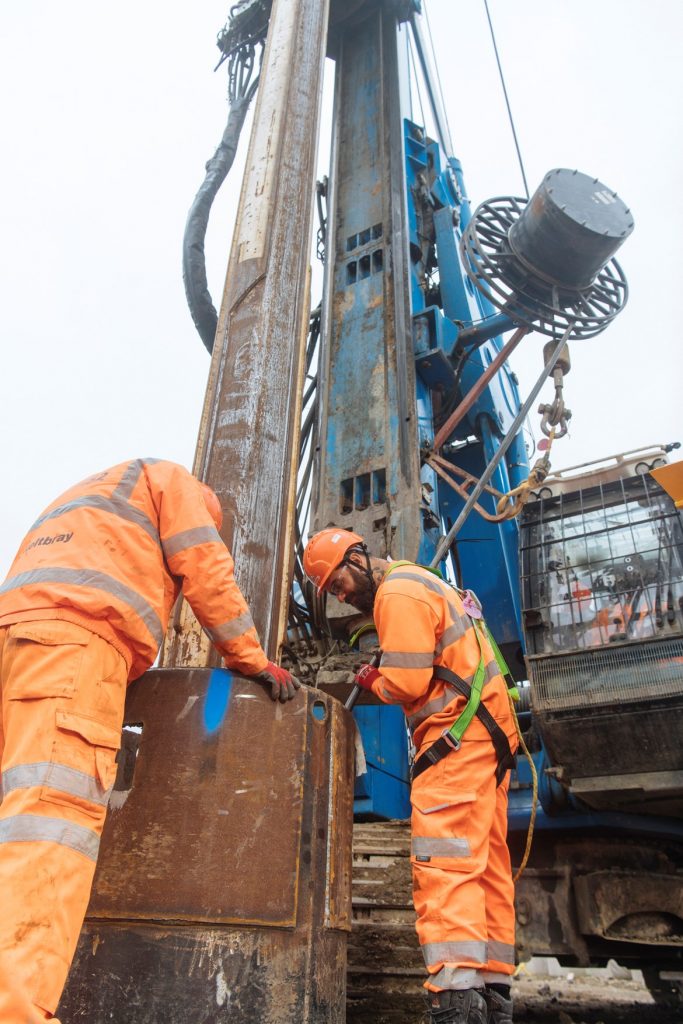Revolutionary building technology enables HS2 to tap carbon-free renewable energy


The breakthrough, part of HS2’s Innovation programme, and soon to be trialled by contractors Mace Dragados at the project’s Euston station site in London, will draw ground heat up through the foundations of a newly built construction site office. The innovation’s developer, civil engineering experts, Keltbray, estimates its technology will harness enough energy to supply 80% of the building’s heating and hot water.
With such obvious potential benefits, engineers are already exploring how the new piling technology known as HIPER* pile could be incorporated into HS2’s stations at Euston and Curzon Street in Birmingham to supply zero-carbon renewable energy.
The environmentally-friendly innovation takes advantage of a new piling technique that swaps solid concrete foundation piles for recyclable hollow ones made from a steel industry waste product that reduces the carbon-intensive cement content by up to 70%.
How it works
As part of the site office’s foundations, the hollow tube piles are bored up to 25 metres into the ground and filled with water, before pipes carrying cold flowing water to and from the building above are run through each pile cylinder. As the ground’s heat warms the standing water in the cylinders, heat is transferred to the pipes and carried to the surface to supply the building’s heating system and hot water.
In a novel twist, the technology can be reversed in the summer to be used like air conditioning to cool the building by transferring heat back into the ground.
HS2 Ltd innovation manager, Heather Donald said:
“The potential benefits of this innovation are obvious. By harnessing ground heat this technology has the potential to provide both heating, cooling and hot water to HS2 stations – increasing sustainability by reducing their carbon footprint and running costs.”
Mace Dragados Programme Director, Ben Wheeldon, said:
“One of our ambitions at HS2 Euston Station is to be recognised as a leading project by the public, the industry and our neighbours, and so it’s incredibly exciting for us to have the opportunity to trial this innovative piling technology. It has the clear potential to reduce the use of materials, streamline the piling process, reduce costs and significantly shrink our carbon footprint.”
Keltbray Technical Manager, Asha Panchal said:
“The innovation combines a number of novel technological breakthroughs to deliver the first major change in the piling industry for over 70 years. HIPER Piles use zero-cement concrete, halving embedded carbon emissions compared with a traditional methods. The fact that HIPER piles are hollow also means that they are 60% more thermally conductive so they can harness the earth’s natural zero-carbon thermal energy more efficiently than conventional solid thermal piles.”
